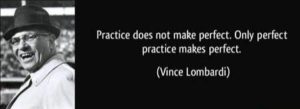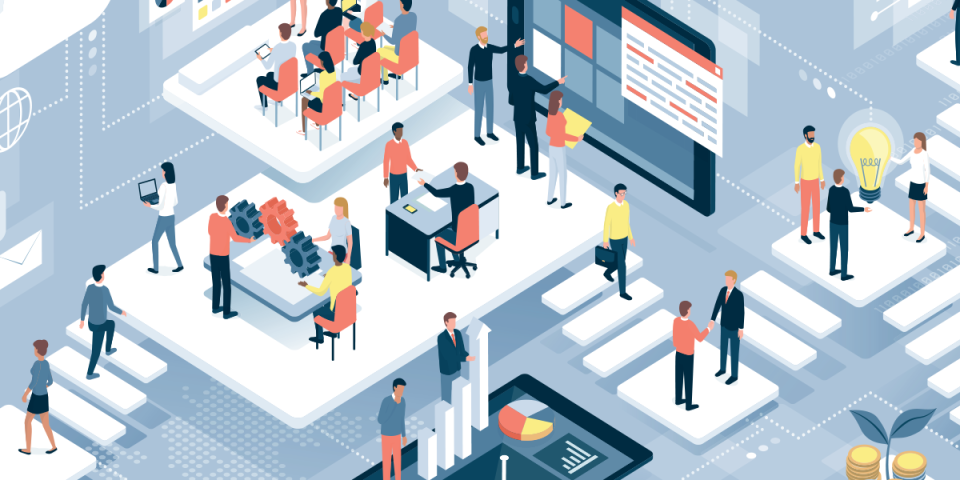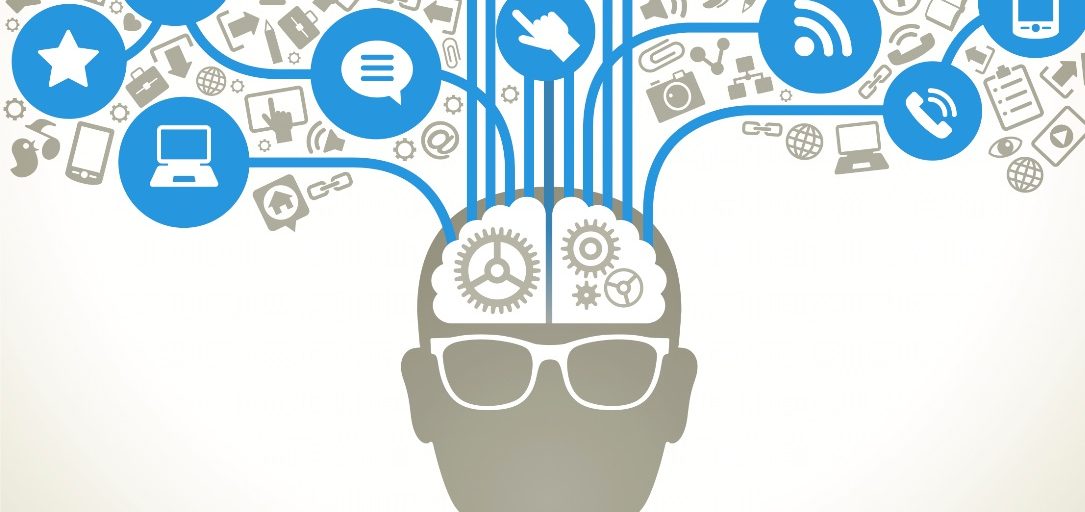
A truism about learning new skills is that the more we do it, the better we should become at that skill. Following this logic, we observe people who diligently spend time practicing their chosen skill. Musicians spend hours a day honing their instrument, athletes work out year-round to achieve peak performance, scientists spend countless years in the lab overseeing experiments and all of us try to learn from our daily experiences, whether good or bad. In his book, Outliers, Malcolm Gladwell suggests that it takes 10,000 hours of practice to become an expert at something.
While it is true that practice yields positive results, it turns out that all practice is not equally effective. Most of our practice is independent and unsupervised, practicing alone without benefit of coaching or feedback. In this situation, it is easy to introduce errors into the practice and then to begin practicing these errors, leading to bad habits and sub-optimal results. When learners fail to make the progress they hope for, they can become frustrated and demotivated, causing them to accept a low level of performance or abandon the skill altogether.
As a long time weekend golfer, I have seen the effects of poor practice on the game I love and the people who attempt to play it. Visit any golf driving range in the world and you will see countless people pounding balls from a mat into an open field surrounded by high fences that serves as a practice range. The vast majority of them practice alone and rather than improving their game, they actually practice the mistakes that are preventing them from getting better. Over and over, they hit weak slices, worm burners, pop ups, fat and thin shots that would lead to much cursing and club flinging on the golf course. As a result, they never really progress at the game, instead finding themselves locked into a sub-optimal swing that causes more frustration than satisfaction. Many simply give up the game rather than subject themselves to humiliation at their continuing poor results.
I see a few golfers at the range who have taken a different approach to practice. They are usually youth or women just taking up the game and they have a coach with them. The coach provides constant feedback as they set up to the ball and swing. Based on that feedback, the golfer makes adjustments and tries another shot. This process goes on for up to an hour and by the end of it, the new golfer has made observable progress in striking the golf ball so that it goes longer and straighter at the target. Less often, I’ll see an experienced golfer with his smart phone on a tripod, capturing his swing on video. He will come back and view the replay from time to time and then go back to his set up and make subtle changes to his backswing and downswing to improve his chances of hitting long and straight. If you ever attend a professional golf event, go over to the driving range and observe the pros warming up. They have a coach or two nearby, providing constant feedback. They have all kinds of swing aids surrounding them. They have video recording of their swings. With each practice shot, they make subtle adjustments to their swing that alter the flight and trajectory of the ball after contact.
This type of practice is called Directed Practice, and according to educational expert Michael Maloney, its purpose is “to ensure that the student is not learning to make errors as they apply the concept or skill to situations not included in the teaching lesson.” When errors are introduced into practice and go uncorrected, they corrupt the learning. The person who has an incorrect understanding of the skill may become lost and frustrated, impeding any further progress. That’s why the majority of golfers reach a personal plateau and never progress beyond it. What’s true of learning the game of golf is equally true for any skill or competency, whether psychomotor or intellectual.
To get the most out of practice time, I will present three strategies that have proven to be effective in accelerating skill and competency development. They are:
- Use Blocked Practice techniques to hone micro-skills
- Use feedback to improve
- Develop your inner coach to direct your practice
Perfecting Practice
Hall of Fame football coach Vince Lombardi famously said that “Practice doesn’t make perfect. Only perfect practice makes perfect.” By that he meant that every practice session should be treated like the real game, with the same commitment and energy. Otherwise, players are just going through the motions and benefit little when confronting a real opponent in the game of football.
This philosophy applies far beyond the gridiron. Treating practice time likes it’s the real thing helps to focus our minds and get the most out of the practice. It also trains us to anticipate the challenges we may face in applying skills in the real world and to show up always ready to do our best. Besides simulating the real world as much as possible, practice schedules play a key role in acquiring new skills and competencies. Educational psychologists divide practice schedules into two types: mixed or blocked. Mixed practice is when we practice all the micro-skills associated with a skill or competency at once, after receiving some instruction (e.g., ABC-abc, the capital letters referring to the instruction and the lower letters referring to the practice). This is often done in a randomized order that has little to do with the way the skill is used in reality. Conversely, blocked practice allows us to practice specific micro-skills immediately after learning them (e.g., AaBbCc). According to the psychological principle known as “contextual interference effect,” blocked practice yields better performance in knowledge and skill acquisition, while mixed practice deepens learning and retention in the long run. Randomized practice yields the worst results because learning is slowed by changing contexts and by intervening tasks.
Many research studies have examined these practice regimens on various subjects and with different groups of learners. Although the results are subject to ongoing debates in academic circles, in general, these studies support the superiority of blocked practice for acquiring new skills while the mixed practice approach is better at maintaining and enhancing retention of learned skills.
So how do we use blocked practice techniques to learn new skills? First, we need to learn how to perform the skill in small steps, with opportunities to practice each step before moving to the next. By breaking the new skill down into its component micro-skills, we are able to focus in on how each one contributes to the overall performance. We can also schedule extra time to work on those micro-skills that prove most challenging. Blocked practice can limit the scope and therefore our time commitment, making practice more manageable and realistic. We should incorporate directed practice techniques into micro-skill training so that we learn each one correctly. This may require extended drill and practice activities that develop fluency. We should also incorporate feedback into practice so that we benefit from our mistakes and learn to correct them. This can be done with the aid of a coach or video recording.
Applying these strategies to the game of golf suggests that each type of swing should be learned and practiced separately. The driver requires a full, powerful swing, while irons require a full, controlled swing and chipping and putting require abbreviated swings with a focus on distance and directional control. Learning each of these separately is best for beginners. Once fluency has been achieved with each swing type, it can be maintained by practicing all the swings together, thus mimicking play on the course, where each swing is unique to the envrionment and purpose of that particular shot. This is a typical practice pattern for golfers who are warming up before playing a round of golf.
Learning from Feedback
The second key principle of effective practice is to use feedback to improve. With each attempt to use a new skill, we can observe the result directly or through the aid of a coach or video recording. The results we achieve are an important indicator of the quality of our practice. In some physical skills, like athletics or performing arts, we get direct feedback in the form of immediate physical and psychological responses that tell us whether the practice produced the desired result. A golfer can watch the flight of a shot to see if it performed as desired. A musician can listen to the notes they play and instantly detect whether they were the correct ones or not.
But many other skills and competencies do not provide instantaneous feedback. For example, in learning coaching skills, the novice coach does not typically see an immediate result. Instead, the results of coaching are often individualistic and incremental, thus making it hard to determine if a particular coaching skill has produced the desired result. In these circumstances, learners must rely on delayed feedback from subjective human sources to determine results. A coaching subject may provide feedback weeks, months or even years after experiencing coaching. By then, the feedback may lose its value, since the coach likely has evolved to a new level of expertise by the time they receive it. Still, skills that are dependent on interpersonal interaction, such as leading, coaching, interviewing, listening, selling, influencing, etc., must depend on feedback from the human subjects of those skills to determine effectiveness and areas for improvement.
Feedback works best in directed practice, where the learner is under direct observation of an instructor or coach. As they practice the new skill, the learner constantly receives feedback on how well they are doing, including both corrective feedback when they make a mistake and reinforcing feedback when they do well. Both types of feedback are critical to performing perfect practice. Corrective feedback ensures that errors are identified and corrected before they become bad habits. Reinforcing feedback confirms that skills are being performed correctly and provides motivation to learners to continue perfecting their practice.
When human feedback is unavailable, such as during independent practice, the learner can still record themselves practicing observable behaviors and review the recording later to self-identify what went right or wrong. For many physical skills, learners can be taught to self-evaluate their practice based on immediate feedback and make adjustments. Thus, a golfer who continues to slice their shots, causing them to fly right of the target, can make adjustments to their grip and set up to promote a straighter shot. As they make minor adjustments, they then see how these affect the trajectory and direction of their shots. Golfers talk about “finding something” in their swing that produces superior results. Often the “thing” they find is a slight adjustment in positioning that suddenly causes the ball to fly the proper distance and direction.
One mistake that most of us make while learning new skills is to ignore feedback and instead stubbornly persist with practice that does not produce the desired result. We may ignore corrective feedback because it feels like criticism or we don’t trust the source of that feedback. We may discount reinforcing feedback due to low self-confidence or self-esteem. It seems obvious, but if we refuse to accept feedback, we are unlikely to improve. Instead, we tend to get locked into a sub-optimal level of performance and rationalize it away by telling ourselves either that we are incapable of doing better or that our mediocre performance is actually acceptable. Over a lifetime, we may develop a poor self-image based on past failures and may even give up trying to improve, thus losing all the benefits that practice offers.
Conversely, those who pay attention to feedback, whether from the observation of others or a developed self-awareness, are often able to make rapid progress in the acquisition of new skills and competencies. Aided by directed blocked practice, they are better able to maintain those skills through mixed independent practice. Successful practice is a powerful motivator that leads to more practice and continuous improvement, which in turn, reinforces our desire to practice even more and get better.
Developing Your Inner Coach
A third factor that influences our ability to achieve positive results through practice is the development of good learning habits, including a commitment to gain the full benefits of practice. Educational psychologists recognize two critical personal skills that have an outsized effect on learning new skills: self-regulation and self-efficacy.
Self-regulation refers to the mental processes through which learners alter their current mental abilities by adopting new task-related skills. This includes both metacognition strategies and the way learners control their feelings, actions and thoughts in order achieve their objective. Research studies have indicated that students who are able to self-regulate the cognitive, behavioural and motivational aspects of their learning are more effective as learners, often achieving exceptional results.
In a previous blog, I have discussed the role of metacognition in learning, including planning and monitoring our own learning and taking corrective action when required. Those who have learned how to learn approach each new skill with a clear plan, including how to acquire the knowledge and the best way to practice and make improvement. If I were to take up another sport, I would approach it with the knowledge of how I learned to play golf and the best learning strategies for me. This would give me an instant head start on those who approach learning clueless of the process.
We cannot ignore the emotional aspect of practice. Without the proper motivation, we are unlikely to sustain a practice regimen for very long. That’s where self-efficacy comes in. Self-efficacy is the belief in one’s own ability to achieve certain outcomes and results. In the learning context, this includes the learner’s belief that they are able to learn, perform or accomplish something academically. Self-efficacy has been shown to be a good predictor of learning and motivation to learn. Research has shown that individuals with high self-efficacy are more persistent and put more effort in the learning process and also exhibit more commitment to practicing and enhancing their skills. Essentially, when people believe in themselves and their ability to succeed, they are likely to remain motivated and make the necessary effort. Self-efficacy becomes a self-fulfilling prophesy.
So how do we enhance self-regulation and self-efficacy? Self-regulation benefits greatly from metacognitive strategies towards learning, including pre-planning, defining a practice regimen and active monitoring. Self-efficacy benefits from past success, among other factors. Finding examples in our past when we were successful in similar circumstances can give us the confidence to confront new challenges and learn new skills that will ultimately benefit us and those around us.
Tagged as Instructional Design, learning to learn, superlearning

